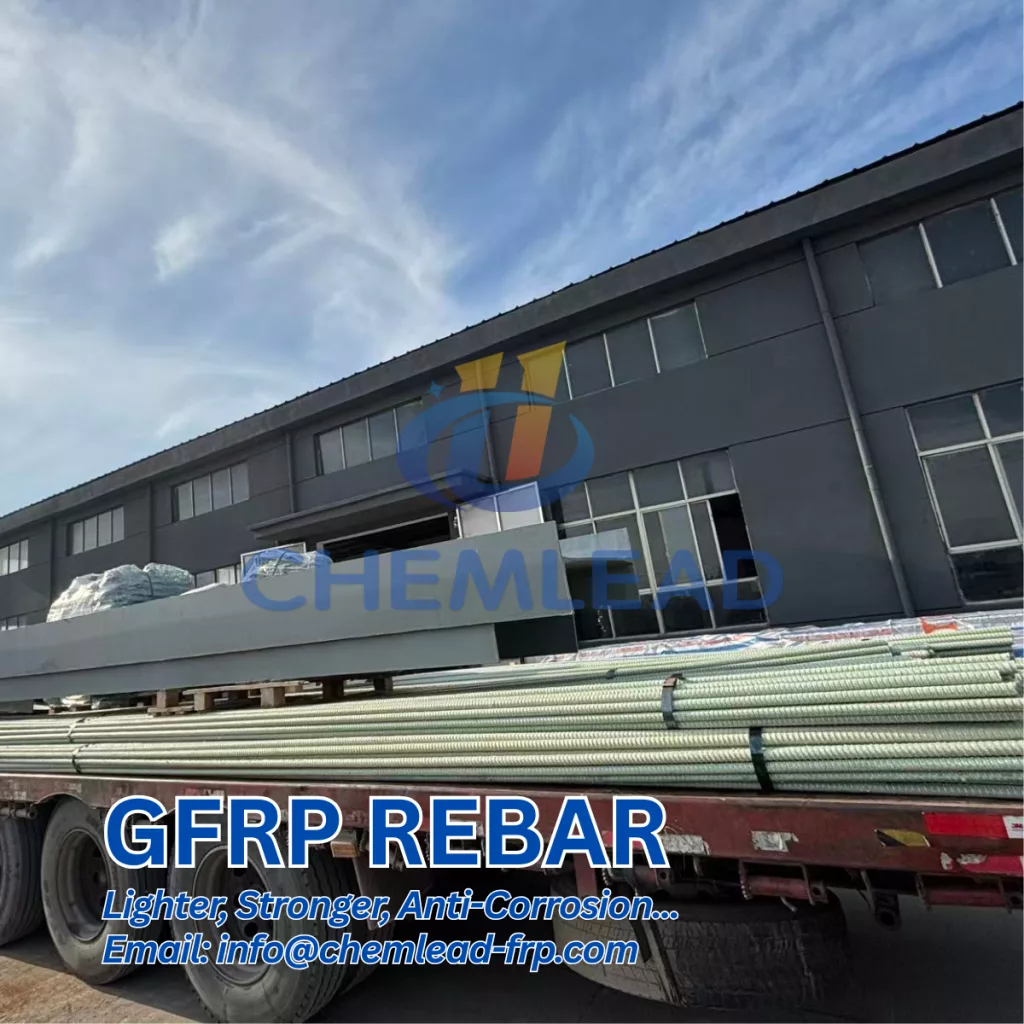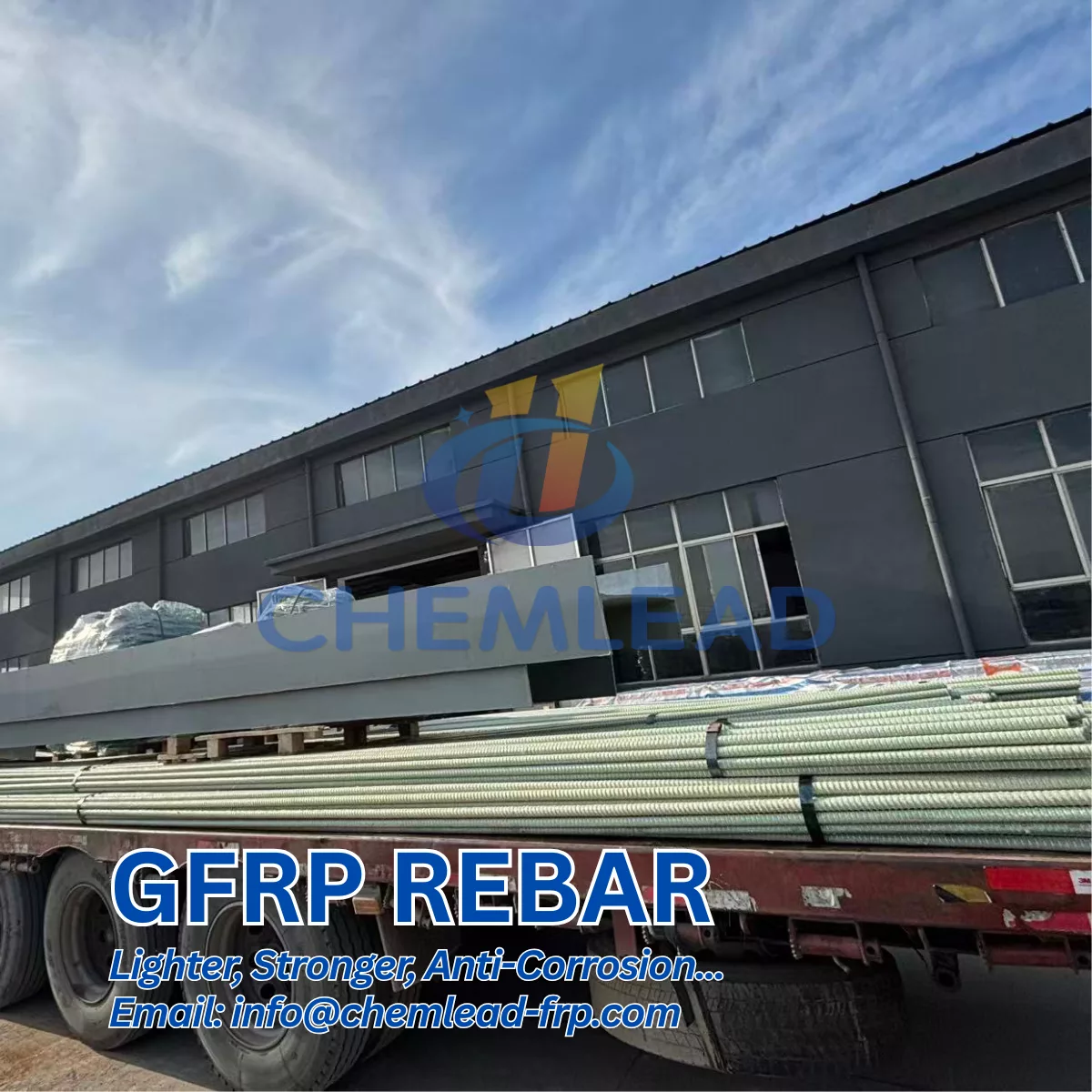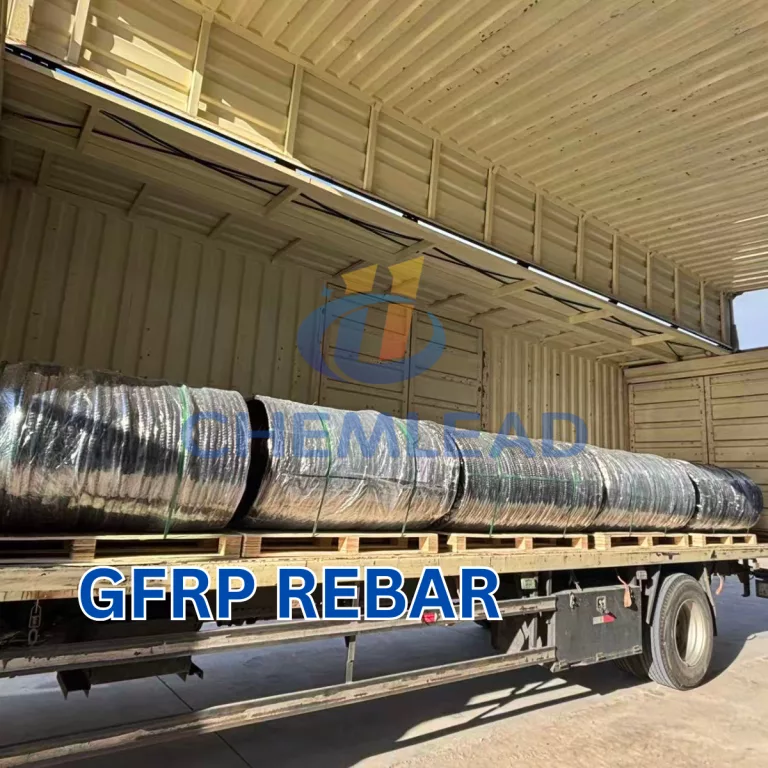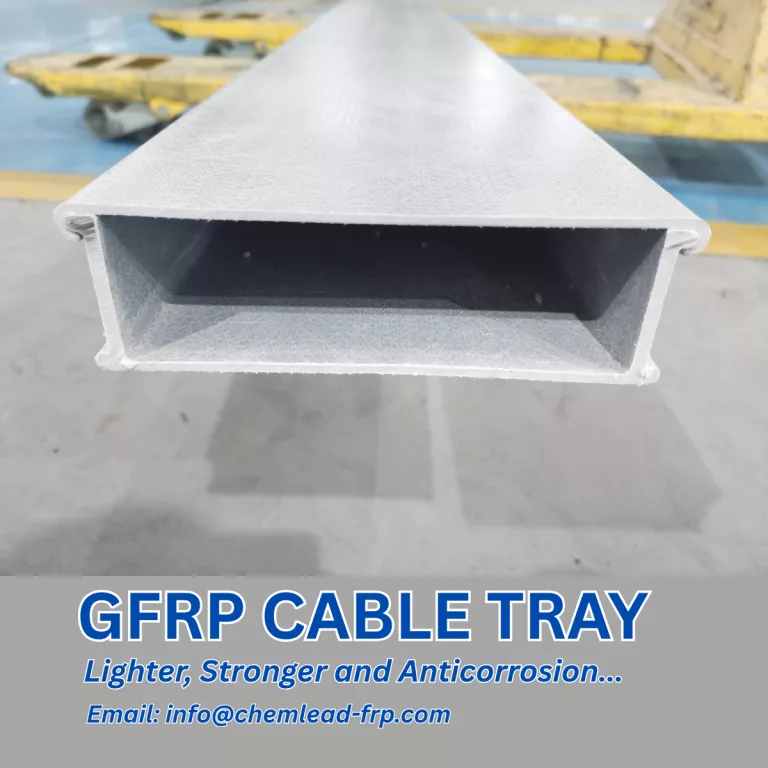+8613776545860

Fiberglass Rebar is a composite reinforcement made from continuous glass fiber and a high-performance resin matrix. Unlike steel, it does not rust, conduct electricity, or absorb heat.
Core benefits include:
-
Corrosion-proof
-
Lightweight
-
High tensile strength
-
Excellent fatigue resistance
-
Long service life in harsh environments
These characteristics make FRP rebar ideal for modern infrastructure where durability and sustainability matter.
Why Engineers Are Switching to FRP Rebar
1. 100% Corrosion Resistance — No Rust, No Spalling, No Maintenance
Steel corrosion is the #1 reason concrete structures fail.
FRP rebar does not corrode — even in seawater, chemicals, salt spray, or high-humidity environments.
Benefits:
-
Longer service life (50–100+ years)
-
No replacement cost
-
Reduced lifecycle and maintenance expenses
-
Improved structural safety
This makes FRP rebar the best choice for coastal, marine, and water-exposed projects.
2. 2× Stronger Than Steel by Weight
Fiberglass rebar offers very high tensile strength while remaining extremely lightweight.
-
Tensile strength up to 1,000+ MPa
-
Does not lose strength from oxidation or rust
-
Predictable performance over time
In many applications, less FRP is needed to achieve the same or better performance than steel.
3. 75% Lighter Than Steel — Lower Labor & Transport Cost
FRP rebar weighs only one-quarter of steel, making on-site handling dramatically easier.
Advantages:
-
One worker can lift long bars alone
-
Faster installation
-
Reduced shipping cost
-
Safer for workers
Contractors can complete projects with fewer people and less equipment.
4. Electrically & Thermally Non-Conductive
FRP rebar does not conduct electricity, heat, or magnetism.
Ideal for:
-
MRI rooms
-
Data centers
-
Power substations
-
Hospitals
-
Communication infrastructure
Where steel causes interference or sparks, FRP rebar eliminates risk.
5. Low Carbon, High Durability — Built for Sustainable Infrastructure
As governments and developers pursue lower-carbon construction, FRP rebar offers major environmental advantages.
-
No corrosion = fewer repairs, less material waste
-
Longer service life = lower carbon footprint
-
Reduces the need for heavy transportation equipment
It aligns with modern green building standards and long-term sustainability goals.
Where FRP Rebar Is Used: Top Applications
✔ Coastal & Marine Structures
-
Ports and piers
-
Seawalls
-
Docks
-
Marine foundations
FRP rebar performs exceptionally in saltwater exposure.
✔ Bridges & Highways
-
Decks and girders
-
Barriers and parapets
-
Pavements
-
Retaining walls
Extends the lifespan of road infrastructure.
✔ Pools & Water Treatment Facilities
-
Swimming pools
-
Wastewater tanks
-
Chemical-processing structures
No rust staining, no rebar expansion.
✔ Tunnels & Metro Projects
FRP rebar is non-conductive and corrosion-resistant — perfect for underground and high-moisture environments.
✔ Industrial & Commercial Floor Slabs
-
Warehouses
-
Factory floors
-
Parking structures
Provides long-term durability under heavy loads.
✔ Residential & Precast Concrete
-
Foundations
-
Slabs
-
CMU walls
-
Precast elements
Lightweight FRP makes small-scale construction faster and easier.
Global Adoption of FRP Rebar
FRP rebar is now widely used in:
🌎 United States & Canada — DOT-approved for bridges and highways
🌍 Europe — corrosion-critical coastal infrastructure
🌏 Middle East — extreme heat and chemical exposure
🌏 Asia — long-term civil engineering projects
Governments and engineering firms are adopting FRP rebar to reduce maintenance budgets and build longer-lasting structures.
Is FRP Rebar the Future of Reinforcement?
Yes — and the shift is accelerating.
As corrosion problems worsen and construction costs rise, FRP rebar offers a smarter solution:
-
Zero rust
-
Longer service life
-
Lower lifecycle cost
-
Improved safety
-
Sustainable performance
From bridges to buildings, from marine structures to industrial facilities, fiberglass rebar is redefining modern construction.





 Get Free Quote Now! Don’t Hesitate!
Get Free Quote Now! Don’t Hesitate!